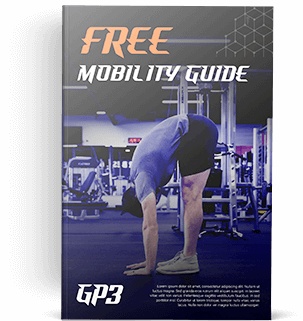Key Points:
1. Homeostasis is the tendency of living organisms to maintain equilibrium.
2. Emotions are associated with the presence of various hormones and neurotransmitters in the body.
3. Our bodies actively try to keep us in the same general emotional state, positive or negative. We can use this knowledge to make change easier!
Estimated reading time 4-8 minutes
Today we’re going to talk about a concept you may have never heard of even though it has been influencing your life for longer than you can remember.
It’s called “emotional homeostasis.”
Let’s define it, shall we? First, what is regular homeostasis? The Oxford Dictionary defines it as: “the tendency toward a relatively stable equilibrium between interdependent elements, especially as maintained by physiological processes.” Thanks, Oxford. In regular English, please? We can translate this as:
“Living things prefer to stay the same.”
This is especially easy to understand when it comes to organisms and temperature. Your body functions best at a particular temperature, so your body wants to stay there. This is why we sweat when we’re hot and shiver when we’re cold. It’s an attempt to maintain equilibrium.
You can see this even more clearly when it comes to the temperature of a room. There’s a built-in homeostasis mechanism, because if the thermostat is set to 70 degrees, the air conditioning will come on when the sensor detects the room temperature is greater.
Your body doesn’t just do this with temperature, however. It also attempts to maintain homeostasis with your hydration status, pH levels, blood pressure, blood sugar, bacterial concentrations, and even your typical body fat percentage range, though that last one could be a topic for a whole separate blog post.
Interestingly, your body also attempts to maintain homeostasis with your emotional state. And this is what we’re going to focus on today.
Feelings, Emotions, and the Body
First, let’s differentiate between emotions and feelings. Emotions can best be understood as a state of the body, more of physiological experience, while feelings are our responses to them. Take anger, for example. The emotion is marked by physical sensations like a rise in body temperature, tightness in the chest, and increased muscle tension. “Feeling angry,” arises as a response to these sensations. Based on the mental story we’ve told ourselves as to why we feel angry, we may experience the urge to yell, stamp our feet, or even act violently. These urges can be taken out upon the person or object of our anger, or something completely unrelated that happened to be nearby.
This is somewhat of an oversimplification but in general, emotions are physical and feelings are mental reactions to them. Ironically, if we recognize the bodily sensations associated with anger, we’re less likely to unconsciously act upon them and later regret it.
The important concept to understand here is that every emotion has a physical component. Further, the physical component of every emotion is accompanied by the presence of a particular chemical cocktail of hormones and neurotransmitters.
Once we know this, and once we understand that the body is constantly trying to maintain its equilibrium, an important piece of the puzzle slides into place. If your body frequently experiences anger, sadness, guilt, or even positive emotions like joy, it becomes acclimated to the presence of the associated chemicals.
Once the body becomes acclimated, it tries to maintain the status quo. Basically, if you’re most frequently joyful (or angry), your body starts to see this as the default state…and it works to keep you there. It tries to maintain the same level of those hormones and neurotransmitters.
This partially explains why someone who is an “angry person” always seems to find things to be angry about. Conversely, it explains why some people don’t seem phased by much. They tend to maintain an even keel regardless of what happens. For example, someone whose body is habituated to the presence of anger hormones and neurotransmitters may fly into a rage if someone cuts them off while driving. They may even be fuming about it minutes later. On the other hand, someone whose body is used to a default state of joy or peacefulness may experience little more than a small flash of annoyance and forget about the whole incident 30 seconds later.
This is NOT a character flaw
We’ve arrived at one of the major reasons why change can feel so difficult. If you’ve ever tried to make a major change in your life, particularly one that involves overcoming “negative” emotions like anxiety, anger, guilt, or insecurity, you know how challenging it can be. It may often appear that situations to derail you or keep you locked in old patterns seem to appear. You may feel powerless to break free from them.
Take the classic example of a person who stays in an unhealthy relationship, either returning to the same toxic partner or finding a new one who’s exactly like the old one. They may do this despite expressing a genuine desire to change or find a new situation. This can be especially frustrating for loved ones of the person in question, who often blame them for a lack of discipline, fortitude, or follow-through.
Here’s the problem, though. It’s much more complicated than a simple lack of discipline. When your body becomes acclimated to the presence of the hormones and neurotransmitters associated with a particular emotion, it’s almost like being an addict. To paraphrase Dr. Joe Dispenza, your body figuratively says something like, “Hang on, you kept sending us the signals that said this should be our default state…We changed your entire physiological chemistry to make that happen! Now you want to change to a whole different default state? That sounds hard…Why don’t we just stay the way it is now?”
What at first sounds scary is actually liberating
In a way, understanding this is hugely freeing. I’ll compare it to the classic example of overeating “junk food.” If you’ve ever downed an entire bag of chips in roughly eight and a half minutes (personal best!) and thought, “What the heck is wrong with me…why did I do that?” then you know this feeling.
The chemical composition of various modern treats were literally engineered to take advantage of an evolutionary mechanism that tells us to overeat when we find a food source that’s incredibly rich in calories. It’s a losing battle to try to willpower your way through a fight against millions of years of human evolution.
So, just like there’s nothing wrong with you for eating way more cookies than you intended, there’s nothing wrong with you if you’re having a hard time making a change to your general disposition or some deep-rooted habits.
Now, this isn’t to excuse anyone of personal responsibility, say that change is impossible, or imply you should just stay in a crummy situation. That’s the last thing I want to suggest. What I want to do is help bring awareness to the forces at play in such an endeavor. If you’re faced with a challenging situation when trying to change, it’s of tremendous help to recognize, “Oh, my body is simply reacting in a certain way due to my past conditioning.”
That allows you to take a metaphorical step back. This subtle distance can help facilitate a conscious decision around how you want to engage with the situation at hand. When you don’t know this or don’t do this, it’s far too easy to fall into the trap of blaming yourself. Or worse, you might start to create an identity around failing to change.
Such an identity is highly counterproductive. Sidenote: At this point, I should accept that I’m probably going to reference that “Identity” post, or the “You are not your thoughts,” post in almost every blog I write. But seriously, if you haven’t read them yet, check them out. Understanding these two things can be a total gamechanger.
So, what can we do about this?
The point is, if you don’t recognize the role your biology plays in trying to prevent you from changing, you’ll start to identify with thoughts like, “I can’t change,” “I’m a screwup,” “I deserve to be unhappy because I always fail at this,” and so on. When that happens, you’re really stuck.
Instead, when you recognize that change is hard, plus you bring awareness to your body’s attempts to prevent you from changing, you can start to tip the scales in your favor. If you’re interested in what else you can do, I recommend two books in particular:
- Atomic Habits, by James Clear
- Breaking the Habit of Being Yourself, by Dr. Joe Dispenza
They both provide step by step guidance about what you can do to change or build new habits. In particular, Dispenza’s book focuses on the neuroscience behind meditation, and offers a guided process for overcoming the influence of negative emotions like anger, insecurity, and guilt. If you’re curious to learn more, I strongly encourage you to check out this video about the power of thought. Ignore the clickbait title. It’s definitely worth a watch.
In the end, when you’re tempted to judge yourself or someone else for finding themselves in the same old situation they’re trying to escape, remember emotional homeostasis. They (and you) need empathy, kindness, and awareness of what they’re up against, not more shame and blame.
Before you go, I’d love to hear from you! Have you heard of emotional homeostasis? Can you think of times in your life when this concept affected you without you knowing?

